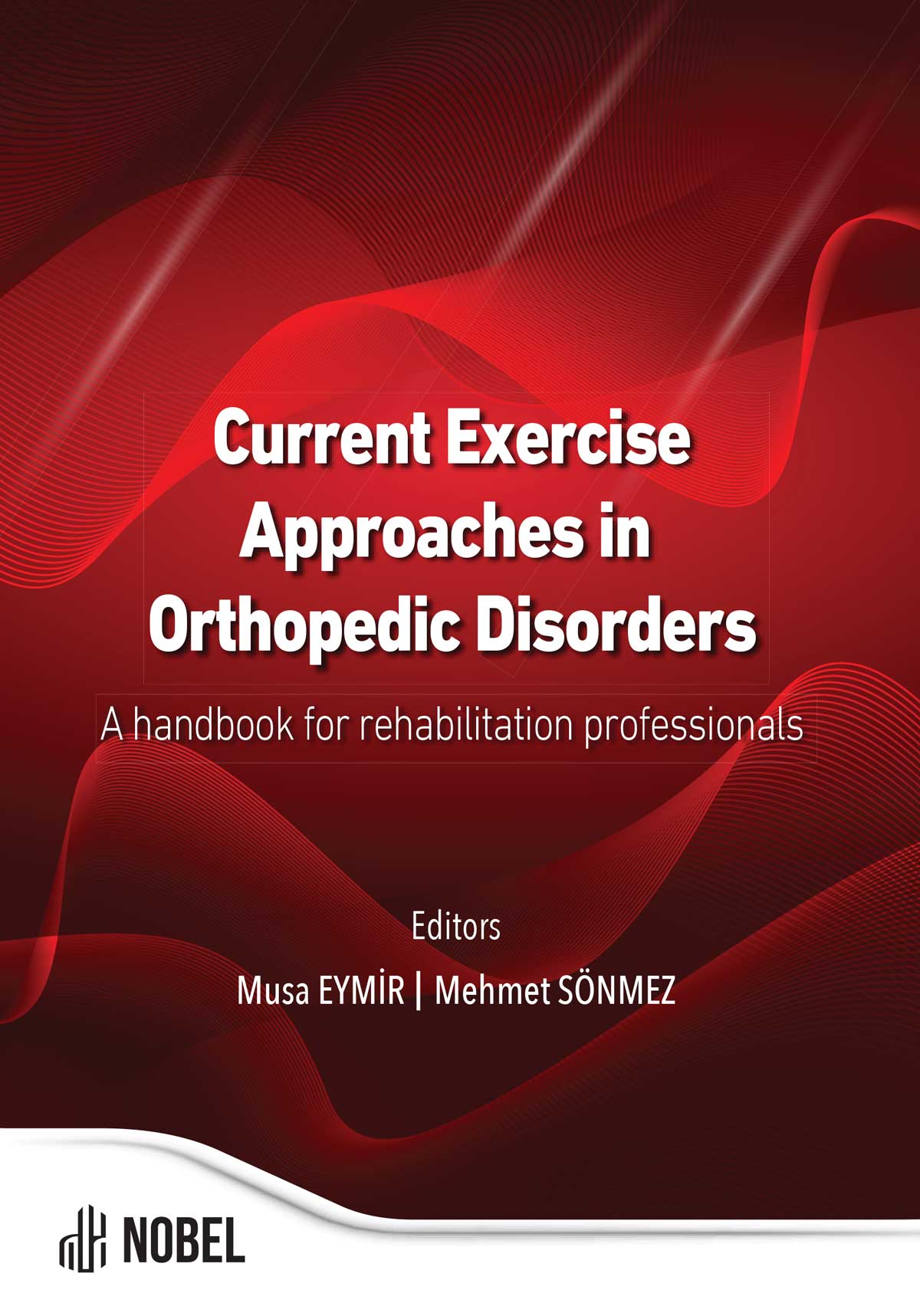Current Exercise Approaches in Lumbosacral Pathologies
Devrim Can Sarac (Author), Umut Apaydin (Author)
Release Date: 2024-01-18
The lumbosacral region, situated at the lower end of the spine, consists of the lumbar vertebrae and the sacrum. This area serves as a critical junction between the upper body and the pelvis, bearing much of the body’s weight and facilitating a wide range of movements. Given its structural and functional responsibilities, the lumbosacral region [...]
Media Type
Buy from
Price may vary by retailers
| Work Type | Book Chapter |
|---|---|
| Published in | Current Exercise Approaches in Orthopedic Disorders A Handbook for Rehabilitation Professionals |
| First Page | 67 |
| Last Page | 95 |
| DOI | https://doi.org/10.69860/nobel.9786053358770.3 |
| Page Count | 29 |
| Copyright Holder | Nobel Tıp Kitabevleri |
| License | https://nobelpub.com/publish-with-us/copyright-and-licensing |
Lumbosacral disorders, affecting the lower back and sacral region, pose a significant challenge in modern healthcare due to their high prevalence and impact on quality of life. As the incidence of chronic lower back pain continues to rise globally, the need for effective treatment strategies becomes ever more critical. In recent years, exercise has emerged as a cornerstone in the management of these conditions, reflecting a paradigm shift from passive to active rehabilitation approaches.
Lumbosacral disorders encompass a diverse range of conditions, with patients presenting a variety of symptoms and underlying issues. Consequently, a thorough patient assessment to identify the primary causes of each individual’s condition is essential for developing an effective, tailored exercise program. Recent decades of research have underscored the critical importance of restoring mobility and flexibility, strengthening core muscles, and promoting overall physical activity in the management of lumbosacral disorders. Hence, this chapter delves into the current exercise-based approaches utilized in the treatment of lumbosacral disorders with a focus on mobility, flexibility and core stability/strengthening along with other exercise-based approaches such as aerobic exercises, water-based exercises, Pilates method and Mind-body exercises.
Devrim Can Sarac (Author)
Asst. Prof. Dr., Izmir Katip Celebi University
https://orcid.org/0000-0003-2465-7990
3Devrim Can Sarac completed his Bachelor’s degree in Physiotherapy and Rehabilitation in 2014. Following his graduation, he worked as a clinical physiotherapist at a private center for approximately one year. In 2016, he began his career as a researcher in the field of physiotherapy and rehabilitation. Between 2016 and 2017, he completed his Master’s degree in Orthopedic Rehabilitation, and from 2017 to 2022, he pursued his Doctorate in Rheumatological Rehabilitation. Currently, he serves as an Assistant Professor in the Department of Physiotherapy and Rehabilitation at the Faculty of Health Sciences at Izmir Katip Celebi University.
Umut Apaydin (Author)
Asst. Prof. Dr., Karadeniz Technical University
https://orcid.org/0000-0002-0866-5870
3He completed his bachelor degree at Hacettepe University which is the best university in medical and health fields in Turkey according to the World University Rankings 2020. He completed his master of science (2016) and PhD (2021) in the Department of Physical Therapy and Rehabilitation at the Gazi University. His field of master’s education is "Children with Cerebral Palsy". He has focused on early intervention and early diagnosis of infants at risk. He worked in Gazi University as a research assistant between 2014 and 2021. Now, he is working at Karadeniz Technical University as an Assistant Professor. He has high experience in clinics, academic publications, and international projects in the field of infants at risk and their parents. He has 12 years of experience in the clinic and he still continues to support children with special needs and their parents at the Child Neurology Clinic at the Medical Faculty of Karadeniz Technical University. He has specialized in early intervention in academic activities such as book chapters, academic publications, and congress presentations. He worked as a researcher in CP Care, VET for EI projects, and European Cooperation in Science and Technology (COST) projects. He is also working as a work group member in a COST project code with CA20124. He gives undergraduate and postgraduate courses on early intervention and rehabilitation of individuals with special needs. His primary research focus is on "children with cerebral palsy" “early intervention” “premature infants” “infants with Hypoxic Ischemic Encephalopathy” and “early assessment tools in risky infants”.
Albert, T. J., & Vaccaro, A. R. (2016). Physical examination of the spine (2nd ed.). Thieme.
Bogduk, N. (2005). Clinical Anatomy of the Lumbar Spine and Sacrum. Elsevier/Churchill Livingstone. https://books.google.com.tr/books?id=UYC_NpoFfAsC
Bogduk, N. (2022). Clinical and Radiological Anatomy of the Lumbar Spine - E-Book: Clinical and Radiological Anatomy of the Lumbar Spine - E-Book. Elsevier Health Sciences. https:// books.google.com.tr/books?id=sXR-EAAAQBAJ
Cook, C. E., & Hegedus, E. J. (2011). Orthopedic physical examination tests: an evidence-based approach (2nd ed.). Pearson.
Delitto, A., George, S. Z., Van Dillen, L., Whitman, J. M., Sowa, G., Shekelle, P., . . . Bishop, M. D. (2012). Low back pain: clinical practice guidelines linked to the International Classification of Functioning, Disability, and Health from the Orthopaedic Section of the American Physical Therapy Association. JOSPT, 42(4), A1-A57.
| onix_3.0::thoth | Thoth ONIX 3.0 |
|---|---|
| onix_3.0::project_muse | Project MUSE ONIX 3.0 |
| onix_3.0::oapen | OAPEN ONIX 3.0 |
| onix_3.0::jstor | JSTOR ONIX 3.0 |
| onix_3.0::google_books | Google Books ONIX 3.0 |
| onix_3.0::overdrive | OverDrive ONIX 3.0 |
| onix_2.1::ebsco_host | EBSCO Host ONIX 2.1 |
| csv::thoth | Thoth CSV |
| json::thoth | Thoth JSON |
| kbart::oclc | OCLC KBART |
| bibtex::thoth | Thoth BibTeX |
| doideposit::crossref | CrossRef DOI deposit |
| onix_2.1::proquest_ebrary | ProQuest Ebrary ONIX 2.1 |
| marc21record::thoth | Thoth MARC 21 Record |
| marc21markup::thoth | Thoth MARC 21 Markup |
| marc21xml::thoth | Thoth MARC 21 XML |

